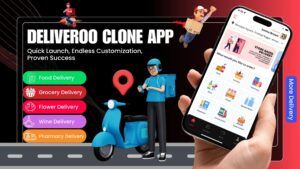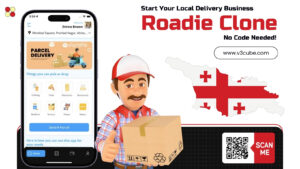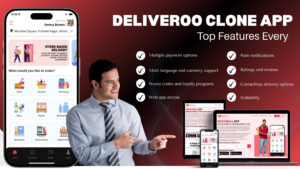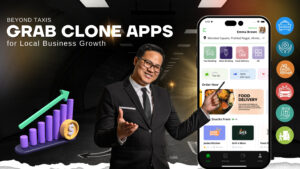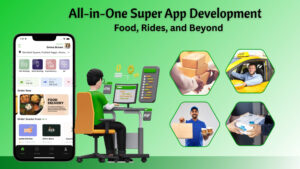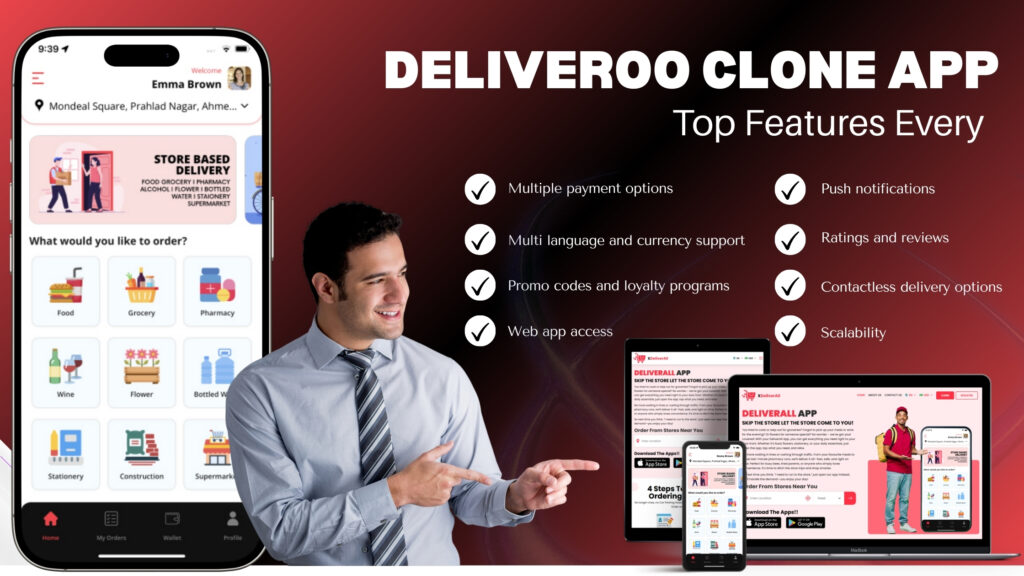
So let’s say you’ve been toying with the idea of running your own delivery platform. You’ve seen Deliveroo dominate in so many cities, you know there’s demand, and you’re probably thinking, if only I had my own version of that, I could build something pretty solid. That’s where the whole “Deliveroo clone” thing comes in.
But here’s the kicker: not all clones are made equal. You might get tempted by the shiny marketing lines, “ready in one week,” “instant launch”, but if the features aren’t there, you’re going to struggle. And honestly, the features matter more than the brand name you slap on it. So today, let’s go through the top must have features. We’ll chat about tracking, the admin panel (the one nobody talks about but it’s basically your control room), and then a bunch of “extras” that make the difference between meh and wow.
Tracking: The heart of the delivery game
Alright, let’s start with tracking. Real time tracking isn’t just a fancy add on anymore, it’s the backbone of any delivery app.
Think about it. A customer orders dinner. The app says it’ll take 35 minutes. Without tracking, that customer just sits there, staring at the door, wondering where their food is. With tracking, they can literally watch the rider leave the restaurant, zigzag through the streets, maybe even take the long way around the block. It keeps them engaged, reassured, and weirdly entertained.
For restaurants, tracking is equally huge. They can see when a rider is approaching, when food is picked up, and they can prep better. For riders, it’s their GPS lifeline, without it, they’re basically lost.
And for you, the platform owner? Tracking means accountability. You’ll know if a rider stalled somewhere for too long, or if certain routes consistently cause delays. That data helps you tweak things later, maybe reroute, maybe set better expectations with customers.
But here’s the twist: global audiences expect different levels of detail. In some countries, customers like seeing every turn. In others, just an ETA with updates (“your order is picked up, now it’s 5 minutes away”) is enough. So make sure your Deliveroo clone has flexibility in how tracking is displayed.
Admin panel: The part nobody brags about but everybody needs
Now let’s move to the admin side. If the tracking feature is the heart, then the admin panel is the brain. Without a solid admin setup, you’re basically flying blind.
The admin panel is where you manage users, restaurants, riders, payments, promotions, and even complaints. It’s not flashy, but it’s where all the boring yet essential magic happens. Imagine trying to manage hundreds of orders with no dashboard. Total chaos.
Here’s what a decent admin panel should absolutely give you:
- Real time overview. Orders coming in, riders on the move, payments flowing, you should see it all at a glance.
- Restaurant management. Adding new partners, setting commission rates, handling menu uploads.
- Driver management. Who’s active, who’s idle, who’s cancelled too many times. This is your way of keeping service quality up.
- Payment control. Tracking money in and out, reconciling accounts, issuing refunds. If this part is clunky, your whole business feels shaky.
- Analytics. Not just numbers, but insights: peak order times, top restaurants, average delivery times. The stuff that helps you plan, not just survive.
And the beauty of a good Deliveroo clone is that you don’t need to build this from scratch, it comes baked in. But here’s the catch: some providers make the admin panel an afterthought. They focus on the pretty customer app but leave you with a back end that feels like Windows 98. Do yourself a favour and test the admin panel as hard as you test the user app.
The “more” part: Extra features that make or break you
Alright, we’ve covered tracking and admin. But let’s not stop there. A modern delivery app needs a few more tricks up its sleeve if you want to compete globally.
- Multiple payment options. Credit card, debit card, mobile wallets, maybe even PayPal or Klarna if your market uses it. The more options, the smoother the checkout.
- Multi language and currency support. If you’re launching in a global city like London, Dubai, or Singapore, you’ll probably have people ordering in different languages. Your app should be ready for that.
- Push notifications. Not just order updates, but promotions, new restaurant alerts, and gentle nudges when someone abandons their cart.
- Ratings and reviews. Customers need a voice. Restaurants and riders need feedback. You need transparency.
- Promo codes and loyalty programs. Discounts still work. A lot. Especially if you’re new and trying to pull people away from big competitors.
- Contactless delivery options. Post pandemic, this is pretty much expected worldwide.
- Web app access. Some people don’t want to download yet another app. A lightweight web version can help catch those users.
- Scalability. If you plan to grow, make sure your clone isn’t stuck handling just a few hundred users. It should be cloud ready and able to scale when the demand spikes.
Why these features matter for a global audience
A Deliveroo clone app will not be able to run in the same way in one part of the world as it will in another. Every country is different. So, your standards for the app should be based on where you are about to launch the app. When regions shift, Expectations shift, regulations vary, and user behaviour changes. But the common thread is this: people want convenience, trust, and reliability.
- In some regions, cash on delivery is still king. In others, everything is digital.
- Some places expect lightning fast ETAs. Others care more about affordability than speed.
- Restaurant culture differs, in one market, small family kitchens might be your main partners. In another, it’s big chains.
So your Deliveroo clone needs to be flexible enough to adapt, and these features, tracking, admin, and the extras, are what give you that flexibility.
A quick reality check
All these features sound great, but don’t forget the practical side.
- Test, test, test. A feature on paper isn’t the same as a feature in action. Order from your own app, cancel an order, try to break it. That’s how you know what works.
- Don’t overcomplicate at the start. Of course, having all the features all at once is really cool. But, do you know what is cooler? To have the reigns of your business in your hands and not letting it run wild. Don’t harp upon getting all the features right in the beginning. Start with the essentials and then keep adding as you go.
- Pick the right provider. Not every Deliveroo clone seller is equal. Some will hand over full source code (ideal). Others keep you locked into their system. Always check before paying.
The final Say
At the end of the day, a Deliveroo clone isn’t about cloning Deliveroo. It’s about giving you a fast track way to run your own delivery platform with the features people expect globally. Tracking keeps everyone sane, the admin panel keeps you in control, and the extra features make you stand out. So if you’re dreaming about entering the delivery business, don’t just ask “how fast can I launch?” Ask instead: “does this app have the right features to actually keep it running?” Because launching is easy. Keeping it alive is where the real game begins.
